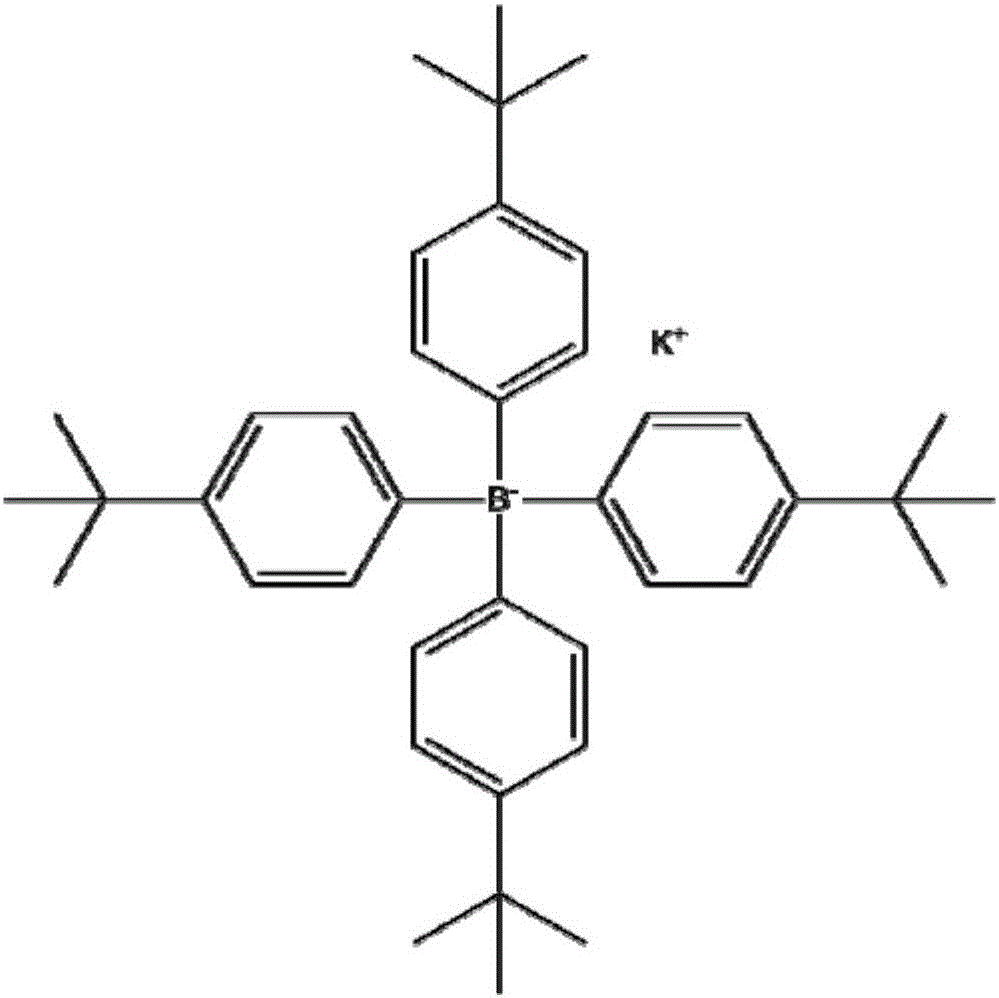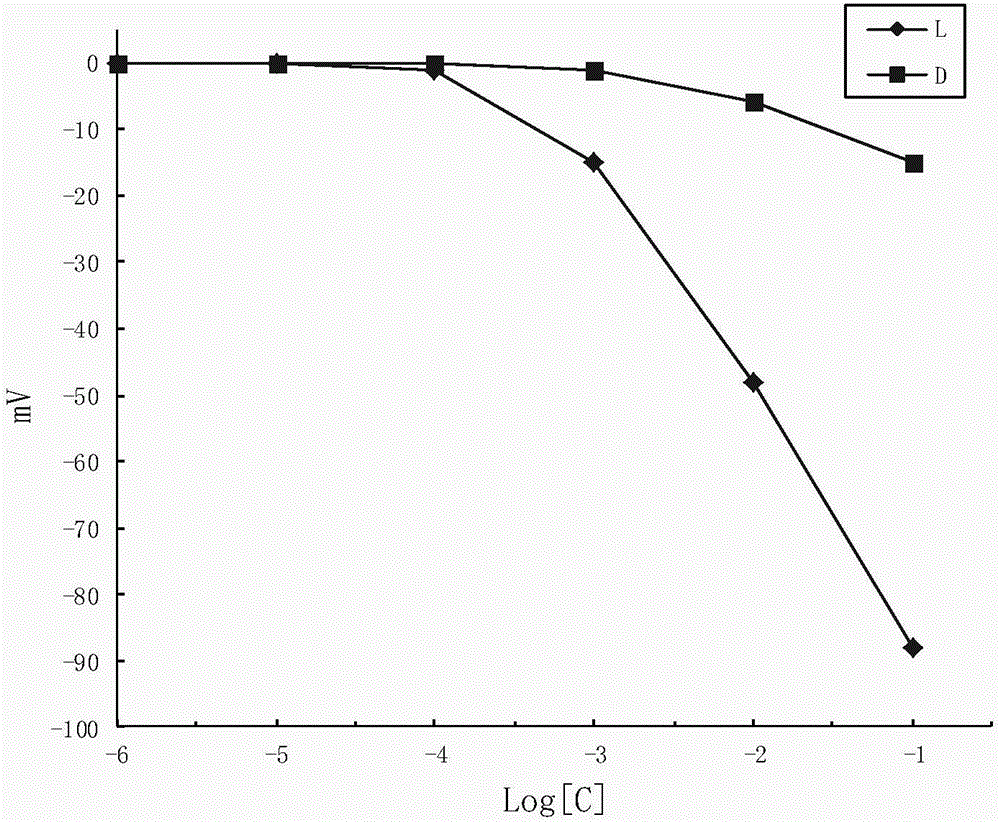Potassium tetrakis(4-tert-butylphenyl)borate-based enantiopotential sensor and its application in the detection of valine methyl ester
A technology of valine methyl ester and potential sensor, which is applied in the direction of instruments, measuring devices, scientific instruments, etc., can solve the problems of no potential sensor public reports, etc., and achieve the effect of low cost, fast analysis speed and simple equipment
- Summary
- Abstract
- Description
- Claims
- Application Information
AI Technical Summary
Problems solved by technology
Method used
Image
Examples
Embodiment 1
[0037] Weigh 4 parts by weight of tetrakis (4-tert-butylphenyl) potassium borate, 64 parts of plasticizer "o-NPOE" and 32 parts of PVC, and dissolve them in 600 parts of tetrahydrofuran; when each component is completely dissolved, put The solution was poured on a glass plate and unfolded naturally, and a PVC film was obtained after being placed at room temperature for 24 hours; the prepared PVC film was glued to an inner diameter of 8 mm, an outer diameter of 10 mm, and a length of 10 cm with a tetrahydrofuran solution with a PVC concentration of 8%. One end of the PVC tube was placed for 10 minutes, and after the solvent was completely volatilized, the KCl filling solution was poured into the tube, and the Ag / AgCl internal reference electrode was inserted to obtain a PVC film electrode; the PVC film electrode and calomel electrode were combined to form the required enantiomer potentiometric sensor. The sensor expression is as follows:
[0038] Hg-Hg 2 Cl 2 ︱KCl(satd.)|Tes...
Embodiment 2
[0040] Example 1 was repeated with the following differences: the parts by weight of the PVC film component consisted of: 3 parts of tetrakis(4-tert-butylphenyl)potassium borate, 64.7 parts of plasticizer "DBS" and 32.3 parts of PVC.
Embodiment 3
[0042] Example 1 was repeated with the following differences: 3 parts potassium tetrakis(4-tert-butylphenyl)borate, 65 parts plasticizer "DOS" and 32.5 parts PVC.
PUM
 Login to View More
Login to View More Abstract
Description
Claims
Application Information
 Login to View More
Login to View More - R&D
- Intellectual Property
- Life Sciences
- Materials
- Tech Scout
- Unparalleled Data Quality
- Higher Quality Content
- 60% Fewer Hallucinations
Browse by: Latest US Patents, China's latest patents, Technical Efficacy Thesaurus, Application Domain, Technology Topic, Popular Technical Reports.
© 2025 PatSnap. All rights reserved.Legal|Privacy policy|Modern Slavery Act Transparency Statement|Sitemap|About US| Contact US: help@patsnap.com



